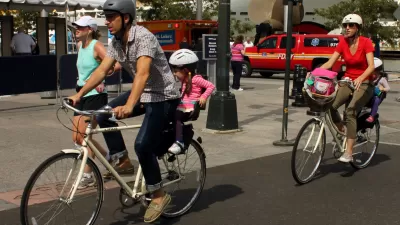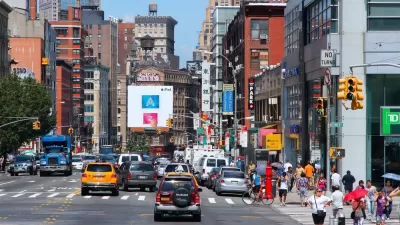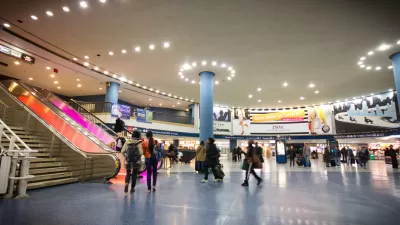City life is being sold as a convenient version of the suburbs, with similar amenities minus the time-consuming commute.

Candace Jackson writes that more wealthy people are moving back into cities from the suburbs and developers are marketing an urban lifestyle to them that reflects the suburban life they are leaving behind. Much larger units, rooftop gardens and swimming pools, and parking garages are elements of new developments that are reminiscent of suburbia, says Jackson:
At the Quay Tower, which overlooks Brooklyn Bridge Park [in New York City], there are just five condos on each floor, two of which have private elevator access. Inside, the larger units have something you see a lot of on HGTV suburban house renovation shows: large mudrooms off the back door with locker-like cubbies and sturdy ceramic-tile floors.
In addition, the areas around these buildings are catering to suburban sensibilities, with big-box retail, malls, and upscale food courts. "Of course, these new buildings are designed for a very narrow slice of the population — those who can afford to spend multiple millions of dollars on a home — but it’s a slice of the population whose purchasing decisions affect all city dwellers," notes Jackson.
Jackson notes that the demographic changes happening in cities involve not just class but, for some cities, race as well. "The return of affluent whites to cities has made for a something of a reversal of the white-flight phenomenon of the early and mid-20th century, when middle class and wealthy whites left cities en masse for the homogeneous suburbs."
FULL STORY: The Suburbs Are Coming to a City Near You

Alabama: Trump Terminates Settlements for Black Communities Harmed By Raw Sewage
Trump deemed the landmark civil rights agreement “illegal DEI and environmental justice policy.”

Planetizen Federal Action Tracker
A weekly monitor of how Trump’s orders and actions are impacting planners and planning in America.

Why Should We Subsidize Public Transportation?
Many public transit agencies face financial stress due to rising costs, declining fare revenue, and declining subsidies. Transit advocates must provide a strong business case for increasing public transit funding.

Understanding Road Diets
An explainer from Momentum highlights the advantages of reducing vehicle lanes in favor of more bike, transit, and pedestrian infrastructure.

New California Law Regulates Warehouse Pollution
A new law tightens building and emissions regulations for large distribution warehouses to mitigate air pollution and traffic in surrounding communities.

Phoenix Announces Opening Date for Light Rail Extension
The South Central extension will connect South Phoenix to downtown and other major hubs starting on June 7.
Urban Design for Planners 1: Software Tools
This six-course series explores essential urban design concepts using open source software and equips planners with the tools they need to participate fully in the urban design process.
Planning for Universal Design
Learn the tools for implementing Universal Design in planning regulations.
Caltrans
Smith Gee Studio
Institute for Housing and Urban Development Studies (IHS)
City of Grandview
Harvard GSD Executive Education
Toledo-Lucas County Plan Commissions
Salt Lake City
NYU Wagner Graduate School of Public Service





























